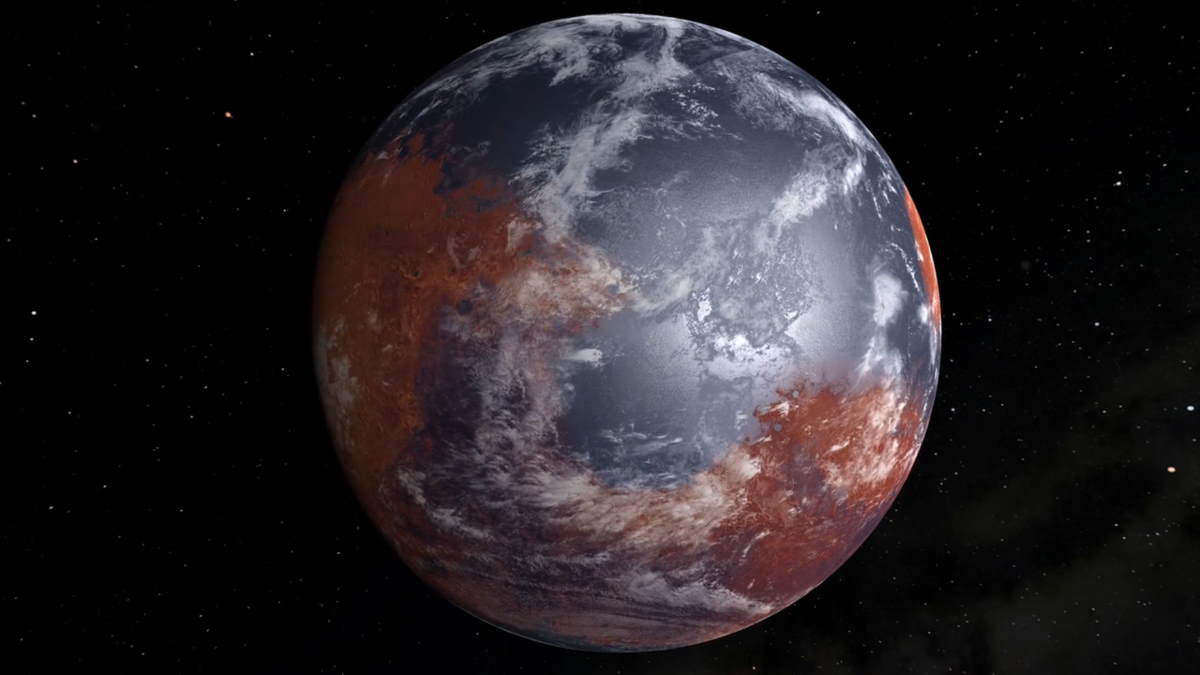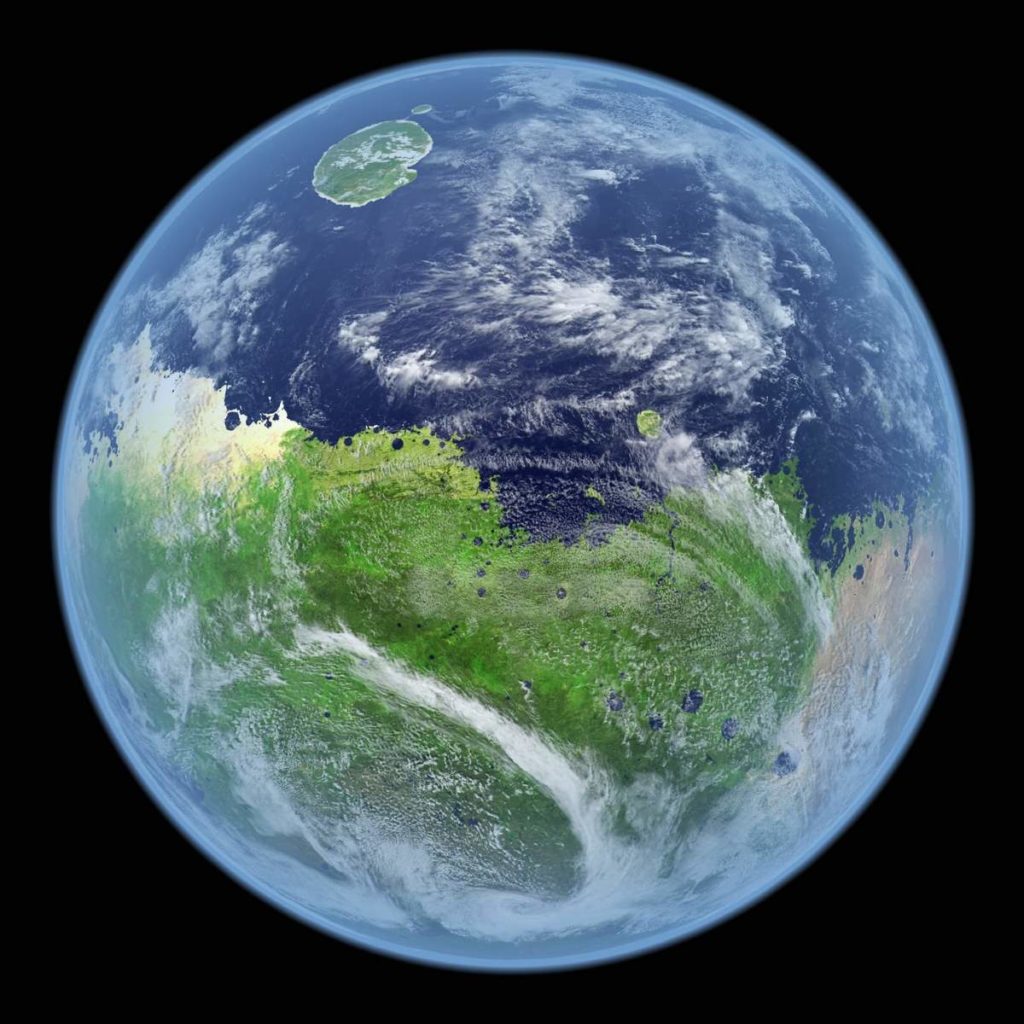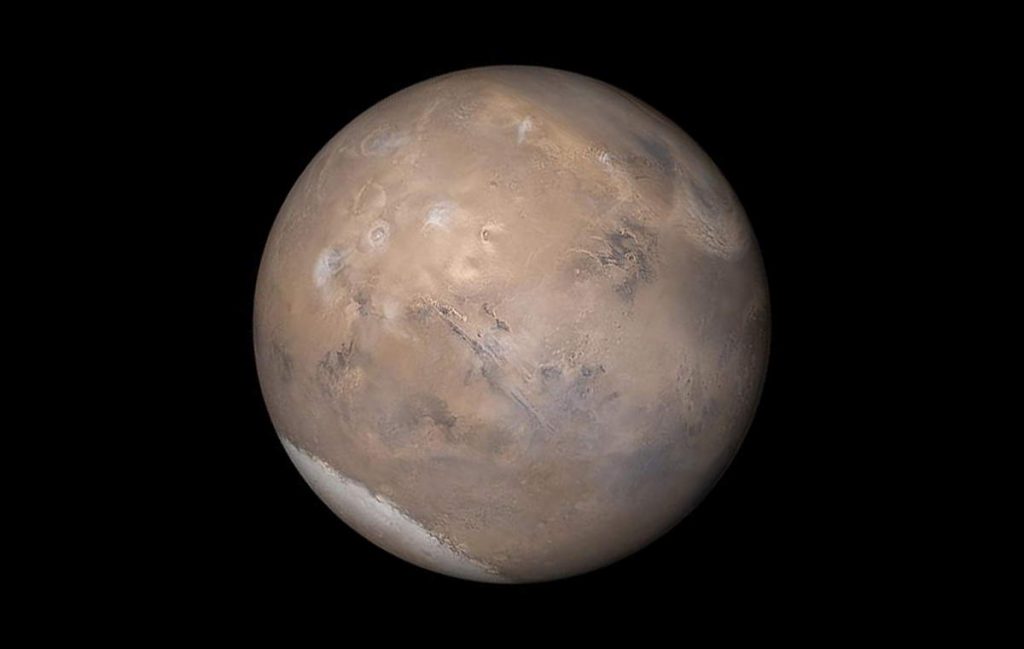The Planetary Society published an amazing animation showing the ancient Mars – how the red planet looked like when there was liquid water on its surface.
Ancient Mars
The ancient Mars may have been more hospitable to life than it is now. Scientists think the magnetosphere of Mars collapsed around 3.7 billion years ago, possibly because of numerous asteroid strikes, and it eventually lost its atmosphere due to solar winds.
Now, Mars has a very thin atmosphere: the atmospheric pressure on the Martian surface averages 600 pascals (0.087 psi; 6.0 mbar), about only 0.6% of Earth’s mean sea level pressure of 101.3 kilopascals (14.69 psi; 1.013 bar).
But, plenty of evidence suggests that Mars once had liquid water, a key ingredient for life. Rivers, lakes, and seas once covered Mars billions of years ago.
- In 2015, maps of water in the martian atmosphere suggested that Mars might once have had enough water to cover up to a fifth of the planet (study: Mars’ water vapor mapping by the SPICAM IR spectrometer: Five martian years of observations).
- In a different 2015 study published on Nature, researchers noted that the shape of some martian pebbles suggests they once rolled dozens of miles down a river, hinting that ancient martian waterways were stable and not merely fleeting streams.
- Analysis of layers of martian rock suggest that earlier, deeper layers were likely created when Mars had abundant, fresher water.
NASA scientists have determined that a primitive ocean on Mars held more water than Earth’s Arctic Ocean. But, after the collapse of its magnetosphere, the red planet has lost 87 percent of that water to space, like it lost its atmosphere.
Water on Mars today

Today, most of the water on Mars is likely frozen away in its polar caps. If all this water ice were to melt, estimates suggest that a sphere the size of the red planet might be covered in about 100 feet (30 meters) of water.
Frozen water can be found also in the mid-latitudes. In 2015, scientists discovered that a giant slab of ice as big as California and Texas combined is buried just beneath the surface of Mars between its equator and north pole. This water didn’t vaporize and was lost to space because it is covered in protective layers of dust.
Mars also has water in the form of hydrated minerals (minerals that have water chemically bound to them). Future crewed missions to Mars could extract this water by heating the hydrated minerals.
The Planetary Society
Founded in 1980 by the American astronomer, planetary scientist, cosmologist, astrophysicist, astrobiologist, author, and science communicator Carl Sagan (November 9, 1934 – December 20, 1996), the American planetary scientist Bruce C. Murray (November 30, 1931 – August 29, 2013), and the American astronautics engineer and space spokesperson Louis Friedman (born July 7, 1941), The Planetary Society is an American internationally active, non-governmental, nonprofit foundation. It is involved in research, public outreach, and political advocacy for engineering projects related to astronomy, planetary science, and space exploration.
Sources
- The Planetary Society on Wikipedia
- Clues to Mars’ Lost Water on the NASA website
- “Water on Mars: The Story So Far” on the NASA Astrobiology website
- Martian polar ice caps on Wikipedia
- Moon Landings: All-Time List [1966-2025] - February 2, 2025
- What Is Max-Q and Why Is It Important During Rocket Launches? - January 16, 2025
- Top 10 Tallest Rockets Ever Launched [2025 Update] - January 16, 2025


